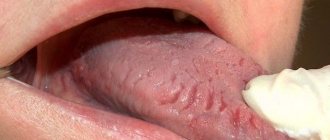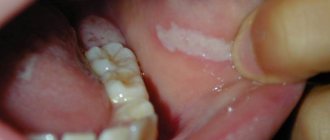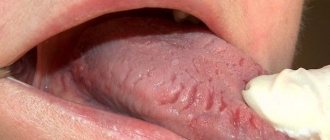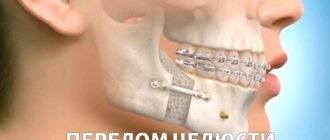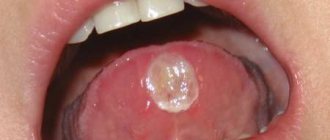Pharyngitis is an inflammatory process that forms on the back wall of the larynx and affects the mucous membrane, as well as deeper layers, tissues of the soft palate and lymph nodes. The acute form of pharyngitis can develop into chronic if the patient does not seek help from a doctor and self-medicates.
Since the pathological process in the larynx is caused by the spread of pathogenic bacteria, the risk of developing pharyngitis increases in people with a weak immune system and in those who suffer from ENT diseases or are predisposed to them.
How dangerous is pharyngitis and how does it manifest itself? Which doctor should I contact and how to treat the disease? We will answer these and other questions in this article.
Reasons for the development of pharyngitis
Experts believe that the peak development of pathology occurs at the end of winter and the beginning of spring, since at this time the human immune system is especially susceptible to colds. Often in the spring season, a lack of vitamins and microelements in the human body leads to the appearance of vitamin deficiency, the body weakens and creates an excellent environment for the development of pathogenic bacteria. Inflammatory processes are also possible: both separately and against the background of the underlying disease.
The first signs of pharyngitis and its further treatment may differ depending on the stage of the pathology, gender, age and general health of the patient.
We include the following as the main reasons for the development of pharyngolaryngitis:
- hypothermia, eating too cold foods;
- deformation of the nasal septum;
- strains of microorganisms that cause the development of chlamydia, candidiasis, whooping cough, scarlet fever, measles;
- adenovirus, influenza virus;
- streptococci, staphylococci, pneumococci;
- sinusitis, tonsillitis, caries, rhinitis;
- difficulty breathing through the nose;
- pathologies of the gastrointestinal tract: reflux, heartburn, hernia;
- abuse of bad habits;
- regular high loads on the vocal cords;
- polluted, toxic air;
- hormonal disorders and endocrine pathologies (diabetes mellitus, obesity, hypothyroidism, etc.);
- tonsillectomy, which was performed on the patient previously;
- infectious diseases in chronic form;
- weakened immunity.
Anemia
Anemia, also called anemia, is characterized by a low concentration of hemoglobin in the blood, and its different types differ in color, severity and other characteristics. One of the varieties is B12 deficiency anemia, also called Addison-Birmer disease, a feature of which is a lack of vitamin B12 in the body, which is necessary for the normal functioning of the bone marrow and central nervous system.
A red tongue is one of the symptoms of anemia.
Frequent accompaniments of this disease are neurological disorders: numbness of the limbs and ataxia due to the death of nerve cells. A red tongue is also one of the symptoms of this type of anemia, and as the disease progresses, it takes on a “varnished” appearance caused by damage to its surface.
Symptoms of pharyngitis
The first signs of the disease may differ depending on the type of pharyngitis. They are both local and general in nature. But there are common signs that are characteristic of any type of pharyngitis: sore throat, bad breath, stuffy ears and difficulty swallowing. With an active inflammatory process, an increase in body temperature above 38° can be observed - this is how the body fights a foreign infection. General signs: sweating, poor appetite, weakness, dizziness, fatigue, fever, chills. Some complain of pain and noise in the ears, and discomfort when exposed to loud sounds.
- During acute catarrhal pharyngitis, swelling and redness of the mucous membranes of the larynx appears. Also, red follicles may form on the back wall of the throat, and clear and slightly cloudy mucus may accumulate. There is swelling and redness of the tongue.
- In the purulent form of acute pharyngitis, ulcers with an accumulation of purulent masses appear on the surface of the posterior pharyngeal wall.
Acute pharyngitis
Acute pharyngitis can occur independently, and can also be accompanied by acute inflammation affecting the upper respiratory tract: rhinitis or inflammation of the mucous membranes of the nasopharynx.
Depending on the cause of development, acute pharyngitis occurs:
- Viral – most often caused by rhinovirus;
- Bacterial – caused by streptococci, staphylococci and pneumococci;
- Fungal – source of the inflammatory process – Candida;
- Traumatic - caused by damage to the pharynx and larynx: the throat was scratched by a sharp bone or burned by boiling water, severe stress on the ligaments;
- Allergic – occurs when inhaling allergens or irritants, such as tobacco, exhaust fumes or dusty air.
Chronic pharyngitis
According to the depth of damage to the pharyngeal mucosa, chronic pharyngitis is divided into: catarrhal, hypertrophic and atrophic forms.
- Chronic catarrhal pharyngitis - there is slight swelling of the tissue layers of the pharyngeal mucosa. Individual areas are sometimes covered with clear or slightly cloudy mucus. It develops as a result of acidic gastric contents entering the throat, for example, in the case of a hiatal hernia. Therefore, catarrhal chronic pharyngitis is a consequence of the development of diseases of the gastrointestinal tract.
- Chronic hypertrophic pharyngitis is a significant severity of swelling of the mucous membrane. Additionally, thickening of the uvula and swelling of the soft palate are observed.
- Chronic atrophic pharyngitis is characterized by some thinning of the lining of the pharynx. They are usually pale pink, sometimes shiny varnished. Some of their areas become covered with crusts, viscous mucus and pus.
Any type of chronic pharyngitis develops due to the fact that the acute form of the disease was not cured in time and developed into a more serious form. Chronic pharyngitis also appears as a consequence of rhinitis, sinusitis, deviated nasal septum, nasal polyps - that is, when nasal breathing is difficult for a long time. In addition, long-term use of vasoconstrictor drops also leads to the appearance of chronic pharyngitis.
How does pharyngitis manifest and progress in children?
Children suffer from pharyngitis more severely than adults. This especially applies to babies under one year old. Swelling of the mucous membrane can cause signs of suffocation; the pain that accompanies the disease reduces the child’s appetite. Often, a baby’s body temperature can reach 40°. The most difficult thing in this situation is that a small child cannot say what hurts.
Incorrect treatment can lead to irreparable consequences for a small, fragile organism. Therefore, at the first signs of pharyngitis, consult a doctor immediately.
Kawasaki syndrome
The disease is complicated by the increased likelihood of damage to important blood vessels.
A serious disease unique to childhood is Kawasaki syndrome, which is an acute fever. The disease is complicated by an increased likelihood of damage to important blood vessels with subsequent thrombosis and rupture of the walls, which makes it deadly.
The cause of the syndrome has not yet been precisely studied, but the main hypothesis suggests a connection between the body’s immune response to an increase in the number of T-lymphocytes and the presence of antigens to staphylococci and streptococci.
The assumption that a child has this disease is based on prolonged (at least five days) fever, accompanied by any four symptoms from the following list:
- the tongue is red due to infection of the entire mucous membrane of the mouth and throat;
- redness of the eye sclera;
- erythema, peeling or swelling of the hands and feet;
- a rash on the body similar to measles, but without blisters;
- pronounced enlargement of the cervical lymph nodes.
It is impossible to completely cure a child of Kawasaki syndrome, so treatment is symptomatic and includes intravenous administration of immunoglobulins, the use of non-steroidal anti-inflammatory drugs and corticosteroids.
Sore throat and pharyngitis: what is the difference?
The general condition of the patient with acute tonsillitis or tonsillitis can be confused with the symptoms of pharyngitis. If the disease is diagnosed incorrectly, then treatment of pharyngitis in adults will not have any effect. And the acute form of the pathology can develop into a chronic one.
Unfortunately, many patients self-medicate and start using medications without a doctor’s specific prescription. This is extremely contraindicated! It is better to take care of your health in time and seek help from an experienced otolaryngologist.
It is important to remember that during pharyngitis, the larynx becomes inflamed, and during tonsillitis, the tonsils become inflamed. During a sore throat, it is always painful to swallow, and the pain intensifies even more when eating food. With pharyngitis, the opposite happens - while eating warm food or warm drinks, the sore throat decreases.
During the development of a sore throat, there is no cough or sore throat, only a sore throat and sometimes the formation of a white coating. With pharyngitis, there is a sore throat, as well as noise, pain, or congestion in the ears. The difficulty in distinguishing between these two diseases is further complicated by the fact that one patient can simultaneously develop both pathologies, since they are caused by the same pathogen.
Ways to clean your tongue
To clean the surface of the tongue from the plaque that forms, it is not necessary to use complex techniques. Regular, affordable devices will do.
- The toothbrush may not have a special rough lining on the inside, oriented to directly carry out a thorough cleansing of thin normal deposits while simultaneously massaging the tongue. It is enough to walk with medium soft bristles with or without antibacterial paste in the direction from the root to the lips, as well as across the tongue to grab the side surfaces.
- You can purchase a special scraper. It is usually made of plastic, although metal or wood products are also available. Some scrapers are supplemented with special brushes.
We invite you to familiarize yourself with White coating on the tongue in children. Reasons for how to treat colds, fever, up to a year
If necessary, use reasonably accessible devices, for example, a teaspoon. You can take a bandage, wrap it around your finger, or use a clean towel or textile napkin.
Tongue hygiene is carried out only after teeth have been brushed. The movements of the scraper are directed only from the root of the tongue to its tip. First, the side with the brush is used, and then massage procedures are performed with the hard part of the device.
Blue coating on the tongue
What to do if a coating appears on the tongue
Blue surface on tongue
Dark coating on the tongue
To clean your tongue from plaque, a regular toothbrush will do. It can even be without a special rough lining, which is designed to care for the tongue. You can do without it. It is enough to take a medium-hard brush and walk the bristles from the root of the tongue to the lips, using antibacterial paste.
As a device for cleaning the tongue, you can use a scraper specially designed for this purpose. It can be plastic, wood or metal. Some specimens also have special brushes.
Tongue hygiene procedures should be carried out immediately after brushing your teeth. You need to move the scraper from the root of the tongue, gradually moving towards its end. First, the side with the brush is used, and then its hard side is used, with the help of which the tongue is massaged.
If you don’t have a brush or scraper at hand, you can use, for example, a teaspoon, a bandage wrapped around your finger, a clean towel or a textile napkin.
Everyone can check the state of the language and draw certain conclusions on their own. However, for this it is necessary to know exactly what indicators and factors tell us about certain changes in the state of the body.
Variations in the color of the tongue can be in a very wide range: whitish, brownish, blue, gray, yellowing may be observed. By the way, if a child suddenly has a strange tongue color, you should not immediately raise the alarm. In most of these situations, it turns out that the unusual coloring is caused by something quite ordinary that got into his mouth.
The next thing you need to pay attention to is the structure of the plaque on the tongue. Knowing what a healthy tongue looks like, you can easily notice the following differences from it:
- Dryness.
- Heterogeneity of plaque.
- Oiliness.
- Looseness.
- Density.
Be sure to set the thickness of the plaque, which is an extremely important parameter. If, during a visual examination, an increase in the degree of plaque formation is noticed, through which the surface of the tongue ceases to be visible, then control over the state of your body must be tightened. If the plaque condition does not improve within 24 hours, it is recommended to visit a doctor and undergo an examination.
The degree of plaque pain is determined by the ease of its removal. In a healthy person, the layer of plaque is translucent, can be easily removed during morning hygiene, and does not appear during the day. If deposits appear as a result of a malfunction of any organ, then it is almost impossible to remove them completely; moreover, they gradually thicken, acquiring a color characteristic of the underlying pathology.
Normal plaque has a slightly whitish tint, which practically does not affect its transparency. It is easy to remove, has no odor, and the tissues of the tongue are visible through it. In cold weather, slight yellowing may appear.
Blue coating on the tongue - causes Blue coating on the tongue What to do if a coating appears on the tongue Blue surface on the tongue What to do if a blue coating appears on the tongue Dark coating on the tongue Why is there a blue coating on the tongue
We looked at the red tongue and the causes of itching, redness with or without plaque. What is the treatment?
The very first thing to do is to start rinsing with soda or furatsilin. To do this, boil a glass of water, add half a teaspoon of soda or two tablets of furatsilin ground into powder and steam in this water (in other words, immediately after the water boils and you turn it off, add soda or medicinal powder).
Furacilin solution for rinsing
Sea buckthorn oil also has medicinal and healing effects. Immediately after eating, rinse your mouth and then apply oil to all reddened areas. After half an hour, it is important to eat or drink additional fluids.
More effective is rinsing with herbal teas such as chamomile or calendula. You can also use St. John's wort. Such herbs can relieve not only the discomfort associated with the appearance of spots or pimples on the surface of the tongue, but also swelling and pain. To prepare a medicinal potion, it is recommended to take a spoonful of the mixture and pour boiling water over it. For one glass - one spoon of herbal mixture. Close tightly and leave for about an hour (at least), then strain and you can rinse.
Sea buckthorn oil is used for lubrication
Diagnosis of pharyngitis
Detection of all types of pharyngitis begins with a visual examination of the larynx using a special device and taking an anamnesis. A throat swab is also taken for examination to test for diphtheria.
Other types of diagnostics:
- Cultural examination - inoculation of taken materials on a nutrient medium.
- Rapid diagnosis - identification of streptococcal antigen in throat swabs.
- Immunoserological diagnosis - the method is used in case of streptococcal infection.
Laboratory research:
- Complete blood count – exclusion of blood diseases, infectious mononucleosis;
- A general urine test helps rule out kidney disease (glomerulonephritis).
Depending on the symptoms of the disease, as well as the condition of the larynx, the presence or absence of cough, fever, plaque on the tonsils and soreness and increased size of the lymph nodes, additional consultations with other specialists may be necessary: an endocrinologist, a cardiologist, an allergist.
Treatment methods for pharyngitis
Treatment must be comprehensive. The patient is prescribed medications that will relieve pain and reduce inflammation. It is also important to adhere to a special diet and exclude from the diet foods that irritate the mucous membrane of the throat and bring even more discomfort: alcoholic beverages, spicy and salty foods, sour foods, carbonated drinks.
Drug therapy
Depending on the clinical picture and general condition of the patient, the doctor may prescribe antihistamines, antitussives and antiviral medications. Lozenges/lozenges are used to relieve pain.
In some cases, they resort to the use of antibiotics. They can only be taken as directed by a doctor.
Local impact
Rinsing with special solutions also has a good effect on the inflammatory process and redness of the larynx. They have a gentle effect, relieve pain and improve the general condition of the patient.
To diagnose and identify the disease, you need to consult an otolaryngologist. At the city clinic, you can contact your primary care physician, who will issue a referral to an ENT specialist. However, this takes time. You often have to wait 2 weeks for an appointment with a doctor. In some cases, this is simply impossible, since it is necessary to quickly conduct an examination and prescribe treatment before the situation becomes critical.
Therefore, we recommend contacting the Medunion medical clinic. We employ practicing otolaryngologists, and you don’t have to wait several weeks for appointments. Sign up today for a time convenient for you, and get tested tomorrow.
Patients choose us because we provide the service of a specialist coming to your home if you cannot come to the clinic on your own. You can also take samples directly at home.
The cost of an initial consultation with an otolaryngologist in Krasnoyarsk at the Medunion clinic starts from 1,300 rubles. You can sign up on the website or by calling 201-03-03.
Once again about attention to language
Based on the above, it should be noted that the color of the tongue is a kind of beacon for every person. Therefore, it should be given close attention, especially to the mucous membranes in children. Doctors recommend examining it daily for changes, especially in color. Various types of blue discoloration on it indicate a serious malfunction in the body system.
It should be noted that the tongue will show signs of illness approximately 1–2 days before the body organs themselves begin to ache.
Be healthy!
Be healthy!
